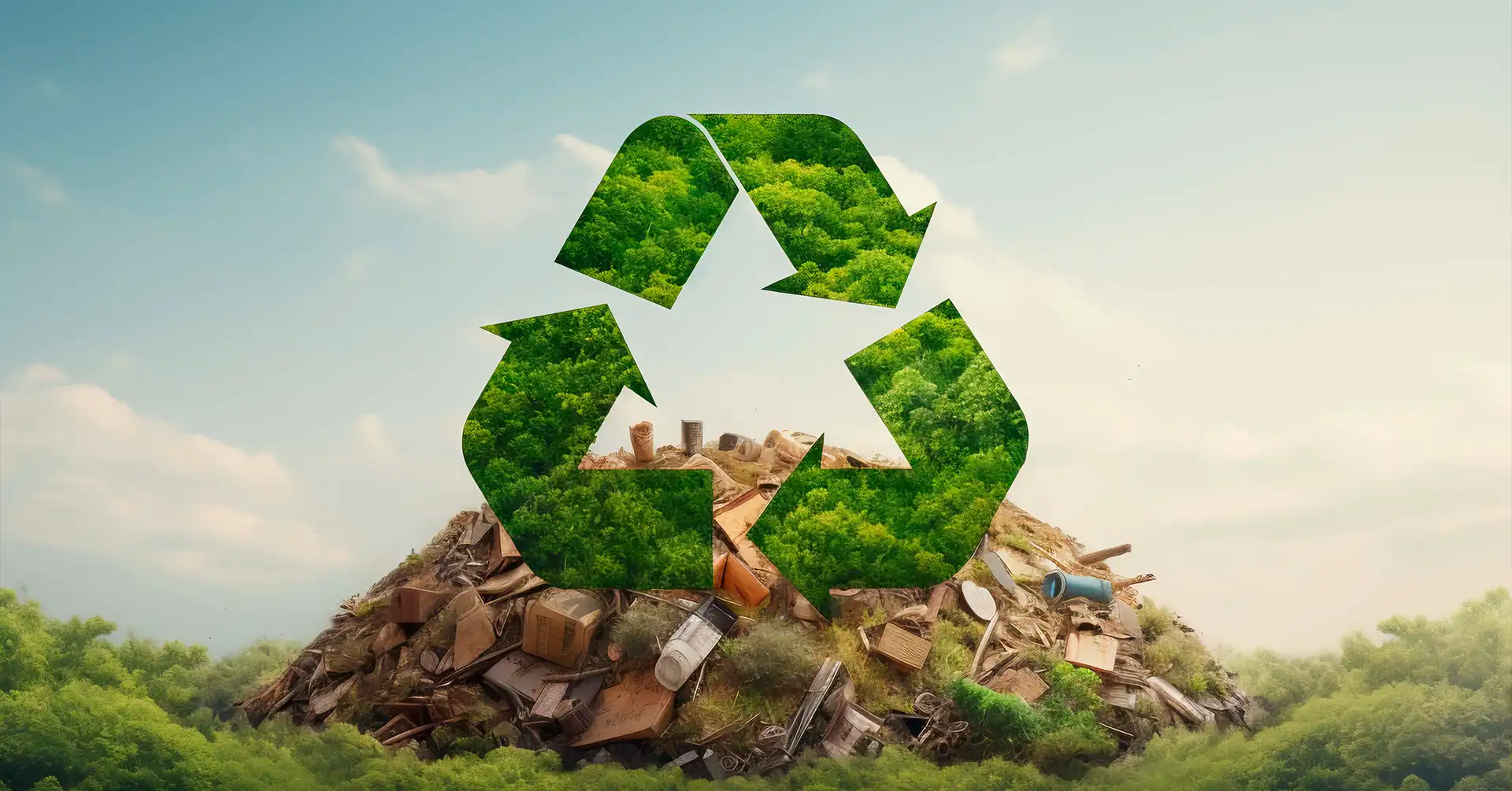Recycling plays a vital role in protecting the environment and conserving natural resources. By recycling, we can reduce the amount of waste that ends up in landfills and oceans. This, in turn, minimizes pollution and saves energy that would have been used to create new materials from scratch. Recycling symbols are essential in this process. These symbols help us understand which items can be recycled and how to sort them correctly. Each symbol has a specific meaning and represents different types of recyclable materials. Understanding the recycling symbols meaning helps us make better decisions about what we can recycle and how to do it properly.
The Basics of Recycling Symbols
Recycling symbols are essential for helping us understand how to properly dispose of different types of waste. These symbols guide us in recycling items that can be reused and tell us which materials should not be mixed. Here’s what you need to know about recycling symbols and why they’re so important:
The Purpose and History of Recycling Symbols
Recycling symbols were created to help us recognize which materials can be recycled. The most common symbol is the “chasing arrows” triangle, which indicates that an item is recyclable. The numbers inside the triangle tell us what kind of material the item is made of, such as plastic, glass, or metal.
Over time, these symbols have evolved to include more detailed information. They now show which specific type of material an item is made from, making it easier for us to recycle items correctly.
Importance of Decoding Recycling Symbols for Effective Waste Management
Decoding recycling symbols meaning is crucial for proper waste management. When we understand what the symbols mean, we can sort our waste more efficiently and ensure that recyclable materials are processed correctly. This helps reduce the amount of waste sent to landfills and conserves natural resources.
Knowing the recycling symbols meaning also helps prevent contamination in the recycling process. For example, mixing non-recyclable materials with recyclable ones can cause issues at recycling facilities, leading to higher costs and less effective recycling.
How to Identify Recyclable Materials
When you know how to identify recyclable materials, you can help the environment by properly sorting and disposing of your waste. Understanding the different recycling symbols and their meanings makes the process easier. Here are some tips to guide you:
Recognizing Recycling Symbols Meaning
- Look for the Triangle: Most recycling symbols are based on a triangular loop made of three arrows. Inside the triangle, you might find numbers or letters that indicate the type of material.
- Understand the Codes: The numbers inside the triangle represent different materials. For example, a “1” stands for polyethylene terephthalate (PET) often found in plastic bottles, while a “2” stands for high-density polyethylene (HDPE) used in containers and jugs. These codes help you determine whether a material is recyclable and how to sort it.
Additional Tips for Identifying Recyclable Materials
- Check Local Recycling Guidelines: Every community has different recycling rules, so check with your local recycling program to understand what is accepted.
- Separate Different Materials: Keep different types of recyclables separate. For example, don’t mix paper with glass or plastics with metals. This can help with the recycling process.
- Look Beyond the Triangle: While recycling symbols are helpful, not every recyclable item will have one. Check labels for information on recyclability.
Challenges in the Recycling Industry
The recycling industry faces several obstacles that make the process of turning waste into reusable materials more complex. By understanding these challenges, we can work together to improve recycling practices.
Confusion About Recycling Symbols
Many people find it difficult to understand the meaning of different recycling symbols on products. When individuals don’t understand the recycling symbols’ meaning, they might dispose of items incorrectly. This can lead to contamination in recycling bins and slow down the entire recycling process.
Inconsistent Recycling Rules
Recycling rules can vary widely from one place to another. What is accepted for recycling in one community might not be in another. This inconsistency can be confusing for consumers and hinder proper recycling habits.
Lack of Consumer Education
A lack of awareness about how to recycle properly is a major obstacle. When people don’t know what materials are recyclable, they might throw everything in the trash. Educating consumers about recycling symbols’ meaning and proper sorting methods can help improve recycling rates.
Processing Challenges
Even when items are properly sorted, recycling facilities may face issues in processing certain materials. Complex materials or items that contain a mix of materials can be difficult to recycle effectively.
Market Fluctuations
The market for recycled materials can be unpredictable, making it challenging for recycling companies to maintain a stable business. When demand for certain materials decreases, it can affect the industry and recycling programs.
Importance of Consumer Education and Awareness
Educating consumers about recycling symbols’ meaning and best practices is crucial for improving recycling rates. When people understand how to properly sort their waste, it reduces contamination and makes the recycling process more efficient. Awareness campaigns and clear guidelines can help bridge the gap between the recycling industry and consumers. By empowering individuals with knowledge, we can create a more sustainable recycling system for the future.
Best Practices for Recycling at Home
Recycling at home is a simple and effective way to help protect the environment. By following some best practices, you can ensure your recycling efforts are successful and make a positive impact.
Know Your Local Recycling Rules
Each city or region may have its own recycling rules and guidelines. Make sure you know what materials your local recycling program accepts and how they should be prepared.
Sort Recyclables Correctly
To make sure your recycling is efficient, sort items according to their material type. Separate paper, plastics, glass, and metals into different bins. Check the recycling symbols meaning on packaging to determine the correct category for each item.
Clean and Rinse Items
Before recycling, clean and rinse containers to remove any food residue. This helps prevent contamination and ensures that materials can be properly processed.
Flatten Cardboard Boxes
Flattening cardboard boxes saves space in your recycling bin and makes it easier for recycling centers to handle the materials.
Avoid Bagging Recyclables
Don’t place recyclables in plastic bags. Instead, put them loosely in your recycling bin. Plastic bags can get caught in machinery and disrupt the recycling process.
Check the Recycling Symbols Meaning
Always take a moment to check the recycling symbols on items. This helps you sort materials correctly and avoid recycling items that may not be accepted.
Don’t Recycle Contaminated Materials
Avoid recycling items that are contaminated with food or other substances. Contaminated recyclables can spoil entire loads and cause problems at recycling facilities.
Reuse When Possible
Reusing items before recycling can extend their life and reduce waste. For example, you can reuse jars, containers, and bags instead of discarding them.
Conclusion
Incorporating effective recycling practices into your daily life can greatly benefit the environment and promote sustainability. By understanding the recycling symbols’ meaning, properly sorting and preparing materials, and adhering to your local recycling rules, you can help ensure that your efforts have a positive impact. Remember, small changes in your routine can lead to significant improvements in reducing waste and preserving natural resources. Let’s commit to making responsible choices and fostering a culture of recycling in our communities.
Also Read:
Walking the Cape to Cape: Exploring the Beauty of the Coast
Move-in Cape Coral, Must-Visit Places After Moving in Florida!






